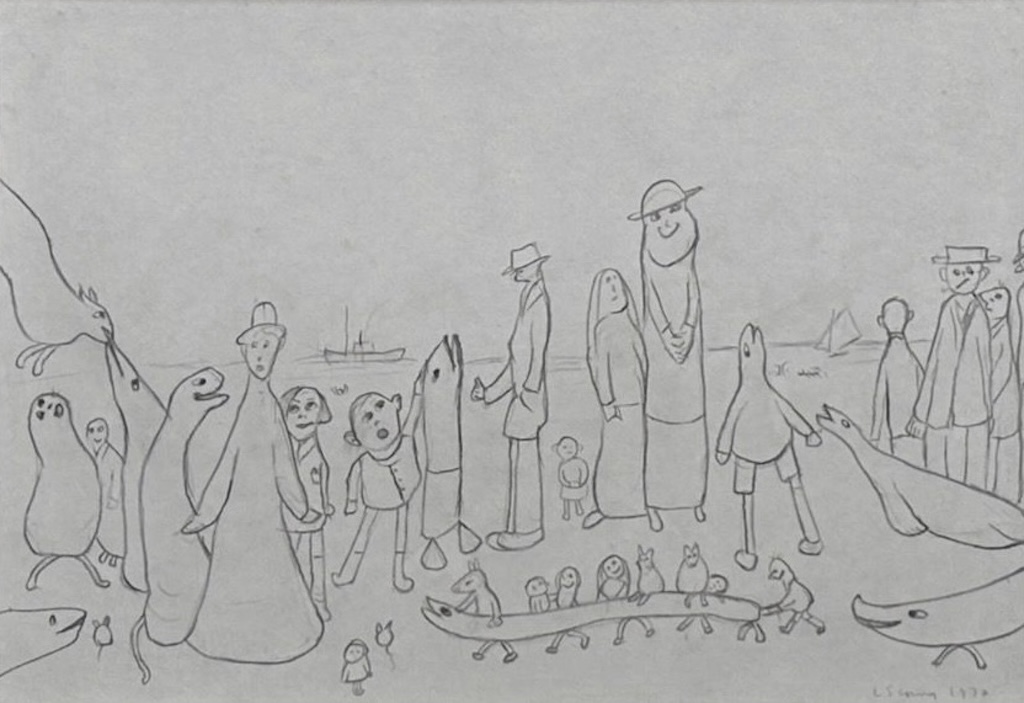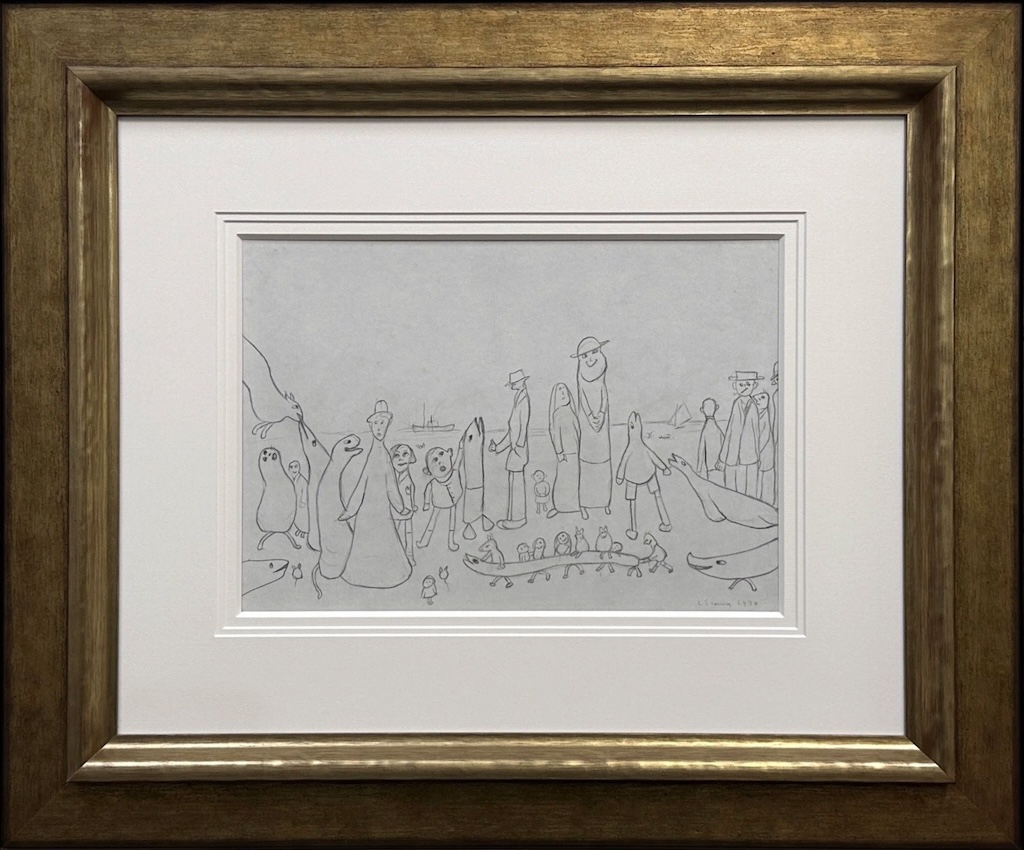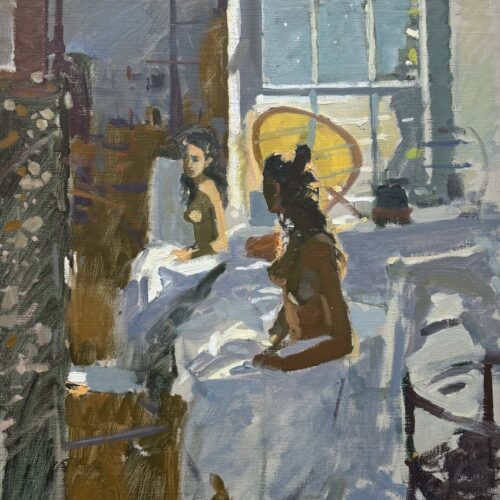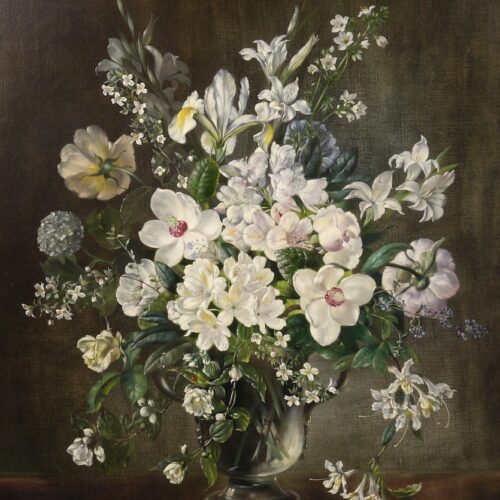Born in Manchester in 1887, Laurence Stephen Lowry was the only child of Robert and Elizabeth Lowry. He started drawing at the age of eight and in 1903 began private painting classes which marked the start of a part-time education. Lowry’s desire to be considered a serious artist led him to keep his professional and artistic life completely separate.
Lowry’s early training was at the Municipal College of Art, Manchester. There he was taught by the French artist Adolphe Valette who introduced him to Impressionism. Lowry was, however, unaffected by Valette’s impressionist technique and continued to develop a more realistic approach to his art.
In Pendlebury 1916, whilst waiting for a train, he became fascinated by the workers leaving the Acme Spinning Company Mill. The combination of the people and the surroundings was a revelation to him and marked the turning point in his artistic career. He now began to explore the industrial areas of South Lancashire and discovered a wealth of inspiration.
By 1920 Lowry’s street scenes set against a backdrop of industrial buildings and terraced houses, had become central to his highly personal style. He now painted entirely from experience and believed that you should ‘paint the place you know’. Lowry’s leisure time was spent walking the streets of Manchester and Salford making pencil sketches on scraps of paper and the backs of used envelopes, recording anything that could be used in his work.
In his early factory scenes the emphasis is placed on the buildings and the atmosphere was often dark and sombre. However, as he developed this theme the figures became more prominent and eventually he arrived at a marriage between the two where the figures and surroundings form a whole.
By the 1930s Lowry had established his own particular style. Encouraged by his teacher Bernard Taylor to try to make his figures and buildings stand out more and he began to experiment with setting them against a white background. Lowry chose ‘flake white’, building up layer after layer on the canvas before painting the subject matter straight on top.
Visits to Wales in the 1960s with his friend and patron Monty Bloom briefly revived Lowry’s interest in industrial scenes. He was impressed by the contrast between the industrial towns and the surrounding countryside. Consequently his paintings from this period are brighter than his Lancashire paintings. However, towards the end of the 1960s Lowry began to lose his creative urge. With the exception of the occasional moment of artistic inspiration, he ceased painting almost entirely.
Laurence Stephen Lowry died of pneumonia in 1976, aged 88. Although he had received critical acclaim for his work during the second half of his life. He never forgot the lack of recognition that he had received initially and he carried with him the feeling of isolation and rejection throughout his career. He refused the offer of a knighthood and numerous other honours. Lowry remained disillusioned with the art world despite the praise that was heaped upon him.
Lowry is remembered as a man of remarkable resilience and sensitivity; he stood alone, unaffected by the influences of other artists and his inspiration came entirely from his own experience. His paintings and drawings are now included in most important private and public collections in the United Kingdom and abroad and his unique works continue to receive the critical acclaim that he so richly deserves.










